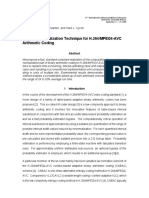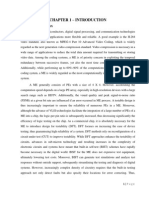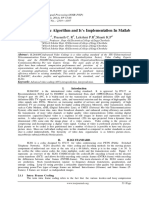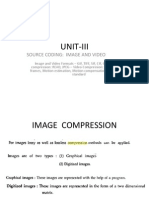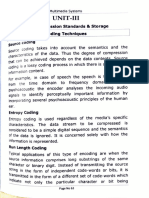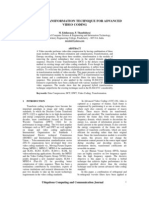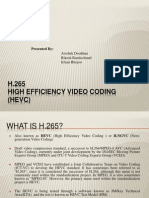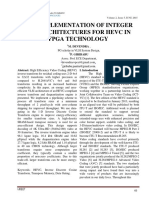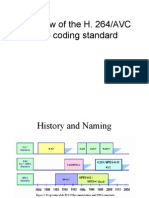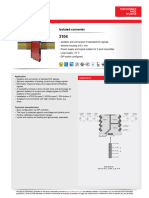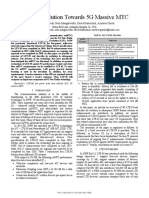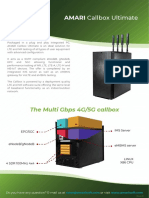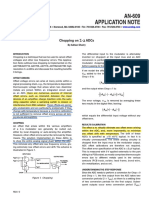International Journal of Advances in Engineering & Technology, June, 2018.
©IJAET ISSN: 22311963
IMPLEMENTATION OF CONTEXT ADAPTIVE VARIABLE
LENGTH CODING AND DECODING ALGORITHM FOR H.264
VIDEO CODEC USING MATLAB
Harisha G C1, Dr. Murugendrappa N1
Manjushree B S2, Kunjana C M2, Lakshmi Sai C2, Mahima B L2
1
Assistant Professor, Dept. of ECE, G M Institute of Technology, Davanagere.
2
Students, Dept. of ECE, G M Institute of Technology, Davanagere,
harisha0710@gmail.com, murugiele@gmail.com
ABSTRACT
This paper proposes the implementation of Context Adaptive Variable Length Coder for H.264 video encoder.
Context-Adaptive Variable Length Coding, a specially designed method of coding the transform coefficients, in
which different sets of variable-length codes are chosen depending on the statistics of recently-coded
coefficients, using context adaptation. Context Adaptive Variable Length Coding is used to encode residual,
scan ordered blocks of transform coefficients. The quantized coefficient inputs to the context adaptive variable
length coder is generated by the integer transform and quantization processor. The implementation is capable
of bringing about compression of video sequences and is capable of processing high resolution pictures of sizes
of up to 1024 x 768 pixels, encoding at a real time frame rate of 25 fps. The compression achieved by the
implementation is over 10 and the reconstructed picture quality is better than 35 dB.
KEYWORDS: Context Adaptive Variable Length Coding (CAVLC) and Decoding (CAVLD), Zig-zag scan,
H.264/AVC.
I. INTRODUCTION
To improve the performance of the existing applications and to enable the applicability of video
compression to new real-time applications, a new international standard for video compression is
developed. This offers significantly better video compression efficiency than previous video
compression standards. It is developed with the collaboration of ITU and ISO standardization
Organizations, called with two names, H.264 and MPEG4 Part 10.The video compression efficiency
achieved in H.264 standard is not a result of any single feature but rather a combination of a number
of encoding tools [1].One of these tools is the Context Adaptive Variable Length Coding (CAVLC)
algorithm used in the baseline profile of H.264 standard [3]. This provides better entropy coding
performance in comparison to an entropy coding algorithm using a single VLC table, and improves
the entropy coding performance by using coding techniques such as run-level and trailing ones
coding, that are designed to take advantage of the characteristics of the 4x4 blocks of transformed and
quantized residual provide the major thrust for this new standard. CAVLC module, which assigns
variable length codes to get the desired data .The consensus among the major players of the
communications and video industry on H.264, might compress the bit stream.
The quantized coefficients are a 4x4 block of data which is scanned in a zig-zag manner and to exploit
the number of zeros, a zig-zag scan of the matrix is used. Zig-zag scan allows all the DC coefficients
and lower frequency AC coefficients to be scanned first. The DC coefficients are encoded using
differential encoding and AC coefficients are encoded using run-length encoding and then a 4x4 block
of data, which is scanned in a zig-zag manner, is then fed to the Golomb or CAVLC processor. The
CAVLC decoding is faster than the conventional one with less complexity and enhances the
113 Vol. 11, Issue 3, pp. 113-121






